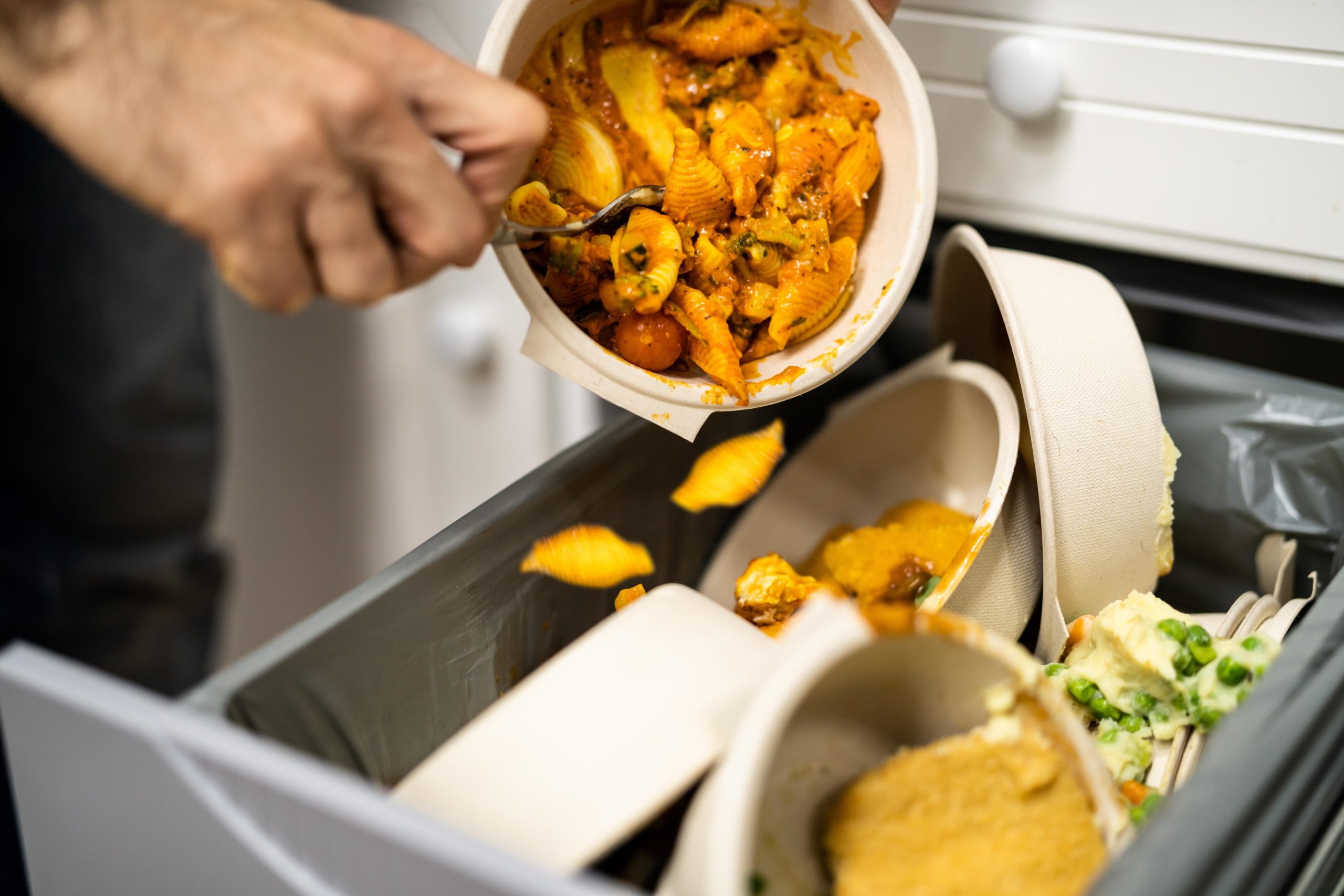How to reduce food waste in restaurants: Strategies that save money and the planet

Food waste is one of the biggest unseen expenses in the restaurant industry. According to the U.S. Food and Drug Administration (FDA), between 30% to 40% of the food supply in the U.S. is wasted, with restaurants accounting for a significant share of that waste. Matter of fact, other studies show that restaurants can waste between 4% to 10% of the food they purchase.
Why is food waste a problem for restaurants?
Food waste doesn’t just reduce your profits—it also takes a significant toll on the environment by contributing to greenhouse gas emissions and squandering valuable resources like water, energy, and labor. The upside? With the right strategies, training, and systems in place, restaurants can dramatically reduce waste, improve operational efficiency, and build a more sustainable brand. Reducing food waste isn’t just good for business—it’s good for the planet, and your customers will take notice.
Why is it important to reduce food waste in restaurants
Food waste in restaurants is both a financial and environmental issue. According to WRAP, the hospitality sector generates 1.1 million tonnes of food waste every year, with over 75% of that waste being avoidable. Much of this food is perfectly edible, meaning restaurants are essentially throwing away money. The cost of food waste to the hospitality industry is estimated at £3.2 billion annually, or roughly £10,000 per outlet!
Environmentally, when food waste ends up in landfills, it decomposes and produces methane—a greenhouse gas with over 80 times the global warming potential of carbon dioxide.
Additionally, wasting food means squandering all the resources that went into producing it: water, land, energy, and labor. The water footprint alone of annual UK food waste equals approximately 5.4 billion cubic meters.
Why does food waste happen
Before you can reduce waste, you need to understand where it’s coming from. The most common sources of food waste in restaurants include:
- Overstocking or over-prepping: Buying or preparing more than you need leads to spoilage.
- Poor storage practices: Improperly stored food expires faster.
- Inconsistent portion sizes: Too-large servings mean more plate waste.
- Prep waste: Trimmings, peels, and unused offcuts often go straight to the trash.
- Menu design flaws: Dishes with unique, rarely used ingredients can increase spoilage.
Want to delve more into the topic of food waste? Check out our podcast-episode on Preventing food waste with the Country Manager at Too Good To Go!

4 tips to reduce food waste in restaurants
With a few strategic changes, restaurants can significantly cut down on waste while improving efficiency and sustainability. Here are four practical tips to help reduce food waste in your establishment.
1. Organize your walk-in to minimize waste
Your walk-in cooler is ground zero for food waste prevention. Here are best practices to ensure it supports your waste-reduction goals:
- Label everything: Include clear dates and item names.
- Rotate stock (FIFO): First in, first out. Teach your team to always use the oldest stock first.
- Group similar items: Makes it easier to find what you need and prevents over-ordering.
- Separate raw and cooked items: Avoid contamination and make better use of space.
- Set a weekly “walk-in check”: Assign staff to clean, consolidate, and log items nearing expiry.
2. Track food waste daily
Logging waste might feel like a chore, but it’s a critical first step toward reducing it. Start by tracking waste in key categories:
- Spoilage – ingredients that go bad before they’re used
- Prep waste – excess trimming or mistakes during food prep
- Plate waste – food left uneaten by customers
- Theft or misuse – intentional or accidental loss of inventory
By consistently tracking these areas, you’ll begin to spot patterns—giving you the insight needed to make smarter purchasing decisions, improve prep routines, and train staff more effectively.
3. Use technology to your advantage
Tools like TotalCtrl let restaurants log waste directly within their inventory system, making the process faster and more effective. This means:
- No more clunky spreadsheets or messy clipboards
- Real-time insights into where and why waste is happening
- The ability to connect waste data with inventory and sales for smarter decision-making
With everything in one system, it’s easier to take action—and see results.
4. Optimize operations using waste data
Once you start collecting data, turn insights into action:
- Redesign menu items – Get creative with offcuts and surplus ingredients to minimize waste and add value.
- Recalculate prep amounts – Base prep volumes on real sales data, not assumptions, to avoid overproduction.
- Train your team – Emphasize portion control, efficient prep techniques, and a waste-conscious mindset in daily operations.
Small changes, guided by data, can lead to big savings and a more sustainable kitchen.
Read more about our Impact Reporting Tool here.
Additional ways to reduce food waste in restaurants
Here are more cost-effective and sustainable strategies to reduce waste:
- Offer flexible portion sizes: Let customers choose smaller portions to reduce plate waste.
- Donate excess food: Partner with local food banks or charities to repurpose unsold meals.
- Repurpose ingredients: Use trimmings creatively (e.g., bread into croutons, peels for stocks).
- Use seasonal ingredients: Reduces cost and spoilage while supporting local producers.
- Educate your staff: Train employees to recognize expiration labels, prep efficiently, and store correctly.
- Offer staff meals: Reduce waste and boost morale by using surplus to feed your team.
- Encourage takeaway: Provide eco-friendly containers so guests can bring home leftovers.
- Compost food scraps: Divert unavoidable waste from landfills when donation isn’t possible.
Try our Restaurant Inventory Management Software for free!
Conclusion
Food waste isn’t just a kitchen issue—it’s a business opportunity. By organizing your storage, tracking waste, and using smart tools like TotalCtrl, you can cut waste dramatically, save money, and run a more sustainable operation.
Turn your food waste into cost savings. Get started with TotalCtrl and take control of your kitchen today!
Here is a complete Media Kit with different versions of our logo, banners, style guides and our products sneak peeks.